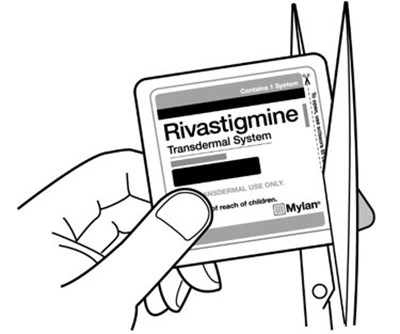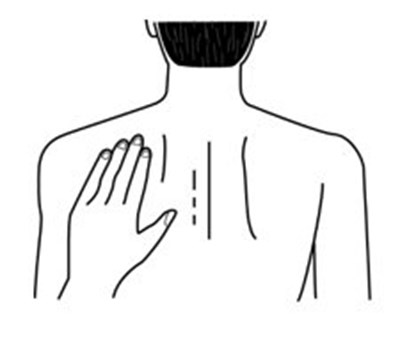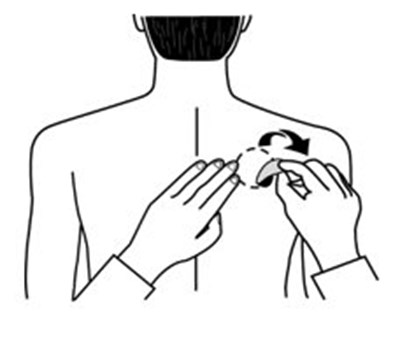Product Images Rivastigmine
View Photos of Packaging, Labels & Appearance
Product Label Images
The following 20 images provide visual information about the product associated with Rivastigmine NDC 0378-9070 by Mylan Pharmaceuticals Inc., such as packaging, labeling, and the appearance of the drug itself. This resource could be helpful for medical professionals, pharmacists, and patients seeking to verify medication information and ensure they have the correct product.
Instructions for Use Figure B - image 02

This text appears to describe possible locations for a medical procedure or examination. The left or right upper arm, left or right side of chest, left or right upper back, and left or right lower back are all mentioned as potential areas of focus. It is possible that this information may be a part of a medical form or questionnaire.*
Instructions for Use Figure D - image 04

Protective liners are used to cover the sticky surface of a transdermal system, which is a method of transporting drugs through the skin. This can prevent accidental sticking or contamination, as well as providing additional protection for the transdermal system.*
Figure 1: Cross Section of the Rivastigmine Transdermal System - image 07

The text refers to components of a medical device, which include a backing film, an acrylic matrix for the drug product, an adhesive silicone layer for skin contact, and a protective release liner that has raised dimples, which is removed before use.*
Rivastigmine Transdermal System 4.6 mg/24 hours Carton Label - image 08

This is a set of instructions for properly discarding the Rivastigmine Transdermal System patch. The user is directed to remove the old patch and apply a new one every 24 hours. The instructions also include details on how to properly dispose of the patch and to contact Mylan for more information. Each patch contains 4.6mg of the medication Rivastigmine. The product is for transdermal use only and should be kept out of the reach of children.*
Rivastigmine Transdermal System 9.5 mg/24 hours Carton Label - image 09

This text provides instructions for the safe disposal of used Rivastigmine Transdermal System patches. The user is instructed to fold the used patch in half and place it in the original pouch before discarding it safely out of the reach of children. The text also mentions that the product contains 30 systems, each delivering 9.5 mg of rivastigmine, and should be used for transdermal use only. For more information, the user can contact Mylan at the provided phone number.*
Rivastigmine Transdermal System 13.3 mg/24 hours Carton Label - image 10

This text is a set of instructions for safely discarding Rivastigmine Transdermal System patches after use. It includes steps for folding the used patch, putting it in its original pouch and safely discarding it out of reach of children. The text also includes details on the dosage and contents of a single patch, as well as the frequency at which new patches should be applied. For more information, readers are directed to call Mylan at a provided phone number.*
Figure 2: Rivastigmine Plasma Concentrations Following Dermal 24-Hour Transdermal System Application - image 11

Figure 3: Time Course of the Change from Baseline in ADAS-Cog Score for Patients Observed at Each Time Point in Study 1 - image 12

Figure 5: Time Course of the Change from Double-Blind Baseline in ADCS-IADL Score for Patients Observed at Each Time Point in Study 2 - image 14

Figure 6: Time Course of the Change from Double-Blind Baseline in ADAS-Cog Score for Patients Observed at Each Time Point in Study 2 - image 15

Figure 7: Time Course of the Change from Baseline in SIB Score for Patients Observed at Each Time Point (Modified Full Analysis Set–LOCF) - image 16

Figure 8: Time Course of the Change from Baseline in ADCS-ADL-SIV Score for Patients Observed at Each Time Point (Modified Full Analysis Set–LOCF) - image 17

Instructions for Use Figure H - image 20

The text appears to be a description for disposing of a specific type of transdermal system. It instructs the reader to fold the device and place it in the trash. Additionally, it advises that the sticky sides should be folded together and placed in an empty pouch, which should be kept away from children and pets. It is unclear what the specific transdermal system is or why it needs to be disposed of, but the instructions are clear and concise.*
* The product label images have been analyzed using a combination of traditional computing and machine learning techniques. It should be noted that the descriptions provided may not be entirely accurate as they are experimental in nature. Use the information in this page at your own discretion and risk.






